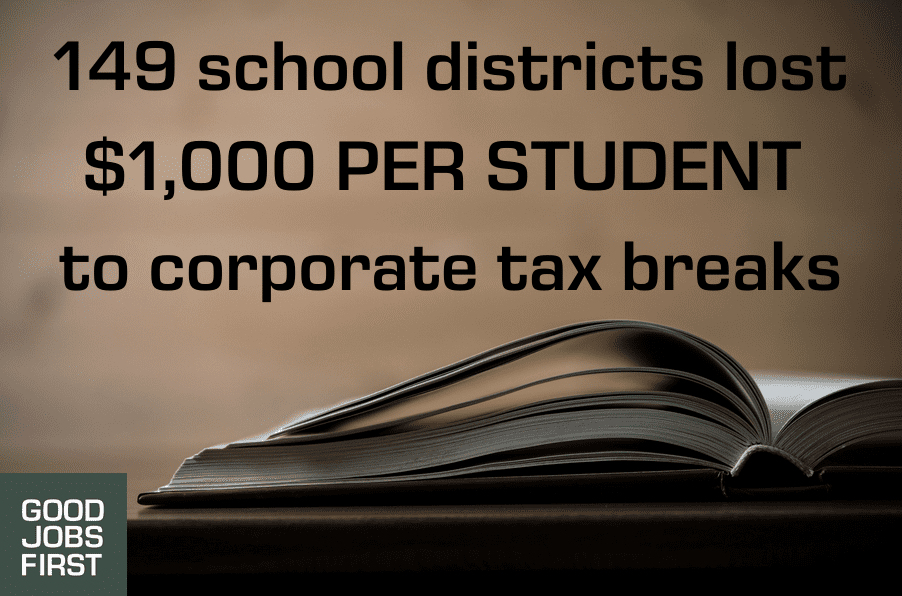
For decades, the public had no meaningful way of knowing how much schools lost via government subsidies given to corporations as part of “economic development.” We could reasonably assume it was substantial: property taxes are the biggest source of public school funding, so giving corporations a pass on paying some or all of it inevitably hits schools the hardest.
Then came a little-noticed accounting rule, which Good Jobs First led the charge to get implemented. We’re talking about Statement No. 77 on Tax Abatement Disclosures, issued by the Governmental Accounting Standards Board (GASB) in 2015. The new statement (we’ll call it “GASB 77” from now on) required all Generally Accepted Accounting Principles (GAAP)-compliant government bodies in the U.S. including public school districts, to disclose how much revenue they lose to economic development tax abatement programs.
You’ll find that statement in backward-looking spending documents governments issue each year called Comprehensive Annual Financial Reports.
What we found confirmed what we and others knew to be true: school districts lose staggering amounts of money to tax abatements. In 2019, we found school districts lost (as in forwent) $2.37 billion due to corporate tax breaks.
We’ll be releasing that information soon as part of a new report on the impact of tax abatements on students. To do it, we set out to track down the GASB 77 statements for every single school district in the country.
Turned out (after combing through 10,000+ financial reports) many of them were missing! Reporting is highly uneven among and within states for a variety of reasons, leaving us in the dark about the true extent of the revenue losses.
But what we did find raises a number of concerns. Disturbingly, school districts with high poverty rates in cities and industrial areas often suffered the most and, because poverty is racially driven, students of color disproportionately shouldered much of the losses.
While the data we’ve uncovered is troubling, GASB 77 is a powerful reminder of the importance of proper disclosure and the power it yields to education advocates, teachers, and students across the country.
One thing we saw over and over as we sought to track down GASB 77 data was the uneven reporting. That needs to change, and there are things you can do to help.

Head on over to our database that collects GASB 77 data, Tax Break Tracker. Don’t see your community? That may be because schools don’t lose money to corporate abatements, but it could also be because they’re not reporting that information the way they should (and that may not be the district’s fault: not only do schools board often have no say in whether cities and counties give away their money, they aren’t made aware of the deals). Ask them about it.
State officials have an even greater role because of their authority. We recommend states create clear authority and mechanisms to oversee financial reporting by local governments.
Once we know how much public schools are losing to tax abatements – in 149 school districts, per-pupil losses to abatements amounted to $1,000 per student – then we can begin to make educated decisions about whether giving up that revenue is worth it.